Review for Persona 4: The Animation - Box 1 (Blu-ray & DVD)
Introduction
Don’t you just love getting one up on the other markets? So often the UK has been the hind end of the anime industry, little orphan Oliver with his bowl timidly asking for more when it comes in the way of content. We’re just too small a market to get all of the good stuff. Recently, there has been a wave of paranoia in the industry to suck all the remaining fun out of anime for eager fans, whether it’s fears of piracy, or indeed actual piracy driving distributors out of business, or more apropos in this case, Japanese fears of reverse importation taking away all the US fans’ fun. It wasn’t ever a big deal with DVD, after all gaps between releases were large, and Japan and the US were in different regions (while Japan and Europe were in the same region, we were separated by a far wider gulf of NTSC and PAL), so there wasn’t as much of a fear from Japanese publishers of Japanese fans shunning expensive domestic releases to buy cheaper US imports.
All of that changed when the Regions were redrawn for Blu-ray, putting Japan and the US in the same zone. Now Japanese fans could import cheap US Blu-rays of shows that were ten times the price at home, and not too long after the domestic release at that. In recent months Japanese distributors have begun seriously limiting what the US can do in terms of their Blu-ray releases, with some companies stopping US Blu-ray releases altogether. More often than not though, US Blu-rays have their audio and subtitles locked so that Japanese audio will forever be stricken with subtitles, an annoyance for native Japanese speakers. Sentai Filmworks had quite the coup when they announced Persona 4: The Animation for release, but at the last minute the Japanese publishers bottled it, and pulled the Japanese audio completely from the Blu-ray. If you buy the US 2-part release, you’ll get the Blu-ray with only the English dub, while the DVD is unmarred. But in Europe, we’re in Region B, and the same fears about reverse importation don’t apply to us. Here, Kazé Entertainment have licensed Persona 4: The Animation, and they aren’t restricted in the same way. They’re releasing the show in BD-DVD combos, albeit in 3 parts instead of two, but this time the Blu-ray discs will have Japanese audio. This time Madman Entertainment in Australia will be sourcing Kazé’s Blu-ray masters for their release, and this time US fans can envy us for a change.
Yu Narukami moves to a quiet country town to stay with his uncle and cousin, and is surprised at just how sleepy it is. There’s a rude wakeup call though when a mysterious murder occurs. What makes it creepier is that it’s somehow tied to the Midnight Channel, a rural, urban legend that states that on rainy nights at midnight, mysterious yet familiar figures will appear on TV. When Yu is actually pulled in through a television and into a parallel world, it becomes clear that these things are all connected, and that he will have to deal with the situation himself if he is to prevent further murders. Fortunately he has the help of two new school friends in Chie Satonaka and Yosuke Hanamura. What’s more, they learn that they have special powers in this parallel world, an ability to call forth Persona to do battle for them. They also have a guide in the bear like Kuma.
Manga Entertainment release Persona 4: The Animation Part 1 on behalf of Kazé in a Blu-ray DVD combo, one Blu-ray disc and two DVDs, although I only received the Blu-ray disc for review. There are nine episodes on this first Blu-ray, ten if you count the director’s cut of episode 1.
1. You’re myself, I’m yourself
2. The Contractor’s Key
3. We are friends, aren’t we?
4. Somewhere not here
5. Would you love me?
6. I’ll beat you, and beat you good
7. Suspicious Tropical Paradise
8. We’ve lost something important again
9. No one sees the real me
Picture
The image gets a 1.78:1 widescreen transfer at a 1080p resolution, which given the detail and rich palette of colours in this animation makes it look gorgeous. The image is clear and sharp throughout, and you can see the unique colour scheme when it comes to the character designs in all its glory. There’s a variegated flesh tone style to the characters that is unlike anything I have seen before in anime, but gives them a warmth and dimension that is unique to this show. While the real world gets a nice level of detail to it, Persona 4 really goes to town with the other world designs, a twisted mirror image of the real world that becomes more and more fascinating, the further you go into the show.
The only sticking point is the prevalence of digital banding, particularly in darker and foggier scenes (of which there are many), which really isn’t on in a high definition format. There are some moments where it even rivals DVD for its crudity. It’s either inherent in the source, which given modern digital animation techniques isn’t beyond the bounds of reason, or it’s in the way the material has been transferred to Blu-ray. It may be of interest to see what the Japanese Blu-rays are like in this regard. Certainly there are no other signs of compression in the show, and the seriously impressive action sequences come across with no such flaw.
The images used in this review are sourced from the PR, and are not representative of the final retail release.
Sound
We get PCM 2.0 Stereo audio in English and Japanese, and depending on which menu you choose at the beginning, either French subtitles, or English subtitles and a signs only track. The US disc from Sentai is English only, and that with DTS-HD MA 2.0 Stereo, so with the choice between uncompressed audio for us and lossless audio for them, it as near as makes no difference. It also makes no difference in this case that as per the usual Kazé practice, audio and subtitles are only configurable through the menu. Otherwise they are locked during playback. There’s apparently continuity with the game in the voice casting for both languages, including the Japanese voice actor for Igor appearing posthumously. I went with the Japanese audio for the duration and was mostly satisfied with the experience, and having sampled the broadcast version of episode 1 in English, I believe dub fans will be happy as well. The stereo does a nice job with bringing across the action and the atmosphere of the show, and there were no problems with glitches or the like.
There is a significant problem with the subtitles though, and it’s the same problem that Kazé had with their Princess Jellyfish release. While the signs and captions are translated for the English audio, it seems there is an inability for Kazé to show more than one subtitle stream at a time on their discs, which means that for the Japanese audio with translated dialogue subtitles, most of the on screen text and captions are not translated. This means that most of the shop signs, the posters, road signs, and the like are missing. For the most part that’s really just a matter of detail, atmosphere and for the sake of completeness. However there are more than a few moments of plot specific on screen text, mobile phone text messages and shadow character game show titles that aren’t translated. For the Blu-ray it’s a simple matter of skipping back, and using the popup menu to briefly change audio tracks, inconvenient at worst. I haven’t seen the DVDs for this title, but if they are anything as locked as the Princess Jellyfish discs, then they are effectively crippled. This is basic stuff, and every other anime distributor can handle simultaneously subtitling and captioning. Kazé need to pull their act together in this respect. Also none of the songs are subtitled in either audio track, including the character song that starts episode 9.
Extras
As mentioned, this is a Kazé disc and is pretty user unfriendly. Its pan-European nature becomes apparent as soon as you play the disc, as it pops up a menu asking you to choose from French and English. The only differences between the two menus are the language, and that the French menu autoplays with a trailer for KZTV.
The episodes are presented with a pleasant animated menu, and Play All does what you would expect, plays all the episodes including the Director’s Cut version of episode 1. If you want to watch the broadcast version, you’ll have to select that individually from the episode list. Each episode is followed by a 90 second white text on black English language credit roll, as is the usual Sentai practice, from whom the English dub and probably the Blu-ray masters are sourced.
The only extras on this disc include the Jikken-kun (Drama 1), 90 seconds of nonsense which to me has nothing to do with Persona 4. You get the teaser and 5 trailers for the show, and you get the textless credits. All but the textless credits are presented in 1080p resolution.
However for some daft reason, the textless credits are presented in 1080i 50Hz resolution, which means that they have a 4% speed-up applied to the audio and runtime. They also aren’t really textless, as they have burnt in karaoke subs, if you don’t mind singing like a chipmunk with them.
Conclusion
I’ve never played a Persona game; have no idea of what it’s about or what the characters and story are. So instantly, it’s clear that I’m not the target audience for this anime. For me it’s just another television show, a piece of entertainment that I have to judge solely on its own merits. That can be a good thing, as I’m not prejudiced by the weight of expectations, but it can also be a bad thing, as I have no idea what any of the references or in-jokes might be about. I guess it balances out in the end. However, this isn’t my first time watching these episodes, as I initially caught the first half of the series as it was being streamed to the UK by Anime on Demand. I have to admit that it didn’t really impress me back then, and it has left much the same impression on me this time. Once again, it strikes me as a very schizophrenic series, one which wants to appeal to adult audiences with some serious storylines and themes, but one which does so in a very childish and shallow manner. I guess much of that has to do with the source material, and the constant reminder that this is an adaptation of a videogame.
The initial distraction, for me at any rate is that each episode starts in The Velvet Room, the back of a limo where for the duration of the prologue, you are apparently seeing from Yu Narukami’s perspective as he gets an update from Igor and Margaret about his progress so far. Not having played the game, I don’t quite see the point of this, as a simple recap would have sufficed, and made more sense. And in the rest of the show, the whole battles with Shadows, the Persona powers expressed in the form of a card to be collected, all speak of the sorts of anime that you’d tend to watch when you were of single digit age.
But the story begins with a murder, and quite a horrific one at that, while the overarching story is one of a killer preying on his victims through supernatural means, pulling them into this parallel world through television screens. Yu and his friends wind up investigating the crimes and fighting this unseen killer by venturing into this parallel world themselves. Another really interesting and adult aspect of this show is the shadows of the protagonists, which manifest as their alter egos. They represent the deepest, darkest corners of their psyches, aspects of their personalities that they’d rather not face, and they naturally try to deny their existence, deny any connection to them. That denial gives these shadows power, and it’s only by accepting them for who they are that they can defeat them. I like this side of show very much, as it’s smartly written and an interesting way to reveal more about the characters.
The biggest problem with Persona 4 is that it doesn’t deal with its adult side all that well, with some unrealistic writing and character development. For instance Yu Narukami transfers to his new school, tentatively makes a new friend or two, and then that night almost get sucked into his TV. This isn’t the sort of thing that a sane second-year high school student would be ready to admit, but he’s not shy about telling his new friends, and likewise they are immediately accepting of his statement, and suggest trying a large screen TV to better fit through. It’s when the second murder occurs that Persona 4 comes closest to losing me. It establishes the victim as close to Yosuke Hanamura, one of Yu’s new friends, and he’s obviously sweet on her. When she first goes missing, he’s frantic. But when the tragic truth comes out, he’s not that affected by it. Instead, he, Yu and Chie instantly go into Scooby mode to try and solve the mystery. It’s unrealistic characterisations like this that highlight this show’s unevenness of tone, and it would have been better if it had just chosen one approach. As it is, it plays more like Pokemon meets Serial Experiments Lain, an unnatural marriage if ever there was one.
But, once you do get used to it, Persona 4 does at least entertain, and it keeps the tone light and humorous for the most part, only occasionally remembering to add in a little drama. At this point in the story, it’s less about the hunt for the killer than it is increasing the size of this particular Scooby gang, and it’s a matter of the team checking the Midnight Channel to see who will be abducted next, and then venturing into the parallel world to rescue them before they are killed. This boils down to the victim facing their shadow self, which through denial gains power and transforms into a monster. The heroes use their Persona to defeat the monster, and once the victim can accept their shadow as part of them, they too gain a Persona and choose to join the team to find and deal with the unseen killer who abducted them in the first place. During the course of these nine episodes, the Scoobies grow in number to five, with a potential sixth cliffhangering over to volume 2. It will be of interest to see just where the story goes after the team is established, which judging by the opening credits will require a seventh member.
In between the parallel world adventures and battles with shadows, the show also throws in some slice of life episodes, more often than not played for comedy to mix things up a bit, and I have to admit that I actually found these episodes to be more fun than the main story. There’s an interesting curry served during a school camp, while Yu gets to be the boyfriend of the school cutie, for all the wrong reasons.
Persona 4: The Animation is certainly a lot of fun, even for someone who last ventured near a games console the first time that a hedgehog broke the sound barrier, but other than excellent production values, and Blu-ray worthy visuals, this isn’t all that special an anime. Perhaps in the next volume, once the Scoobies have been assembled, the main story can get moving, and we can start to see what secrets lie at the heart of this show. But once again I have to say that Kazé really need to get the basics right with their anime releases.
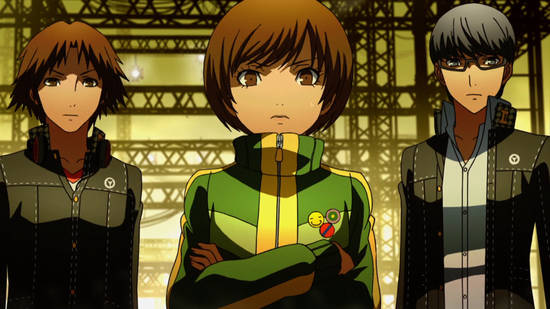

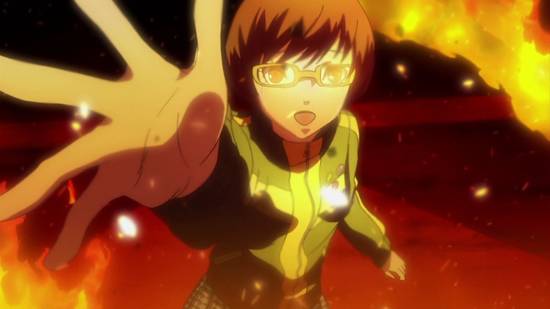
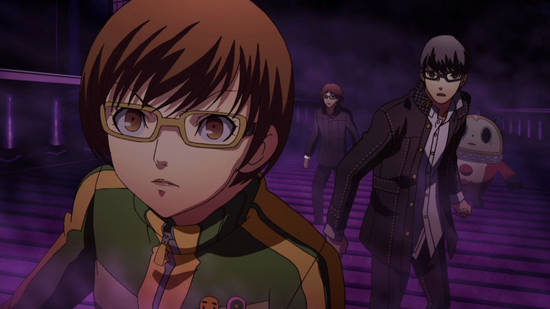
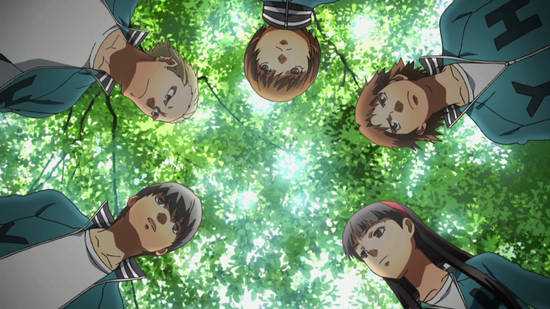
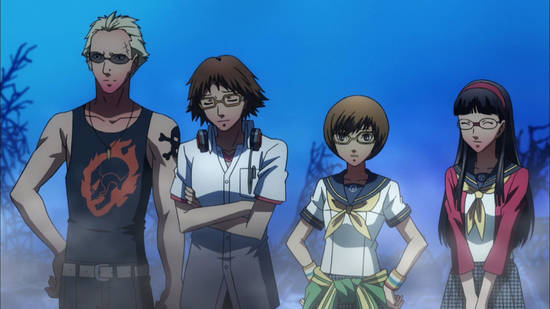
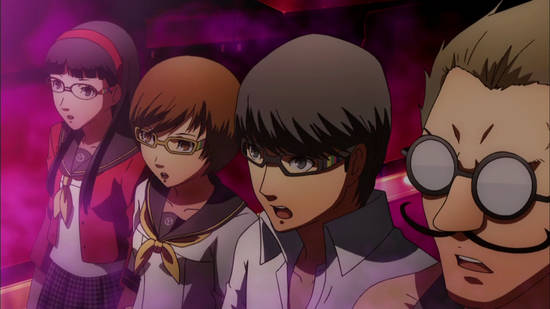

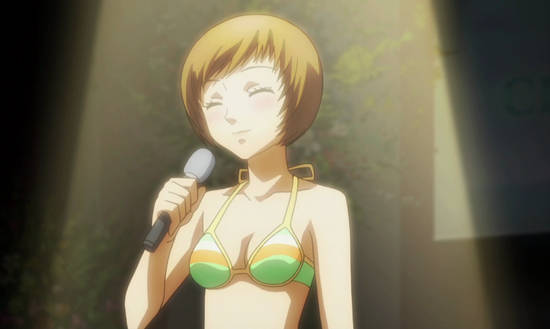
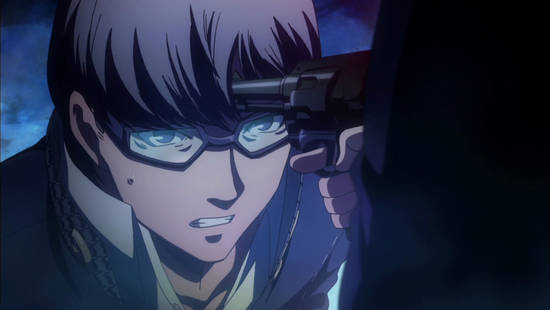

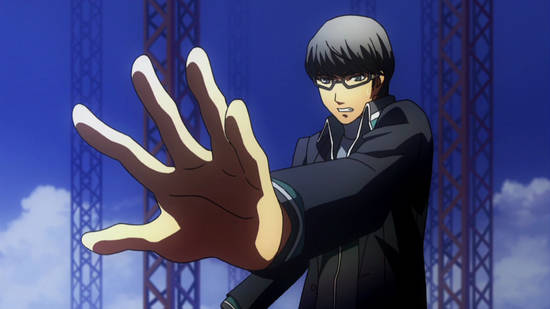
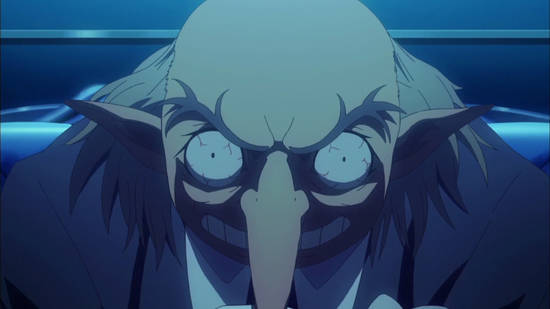
Your Opinions and Comments
Be the first to post a comment!